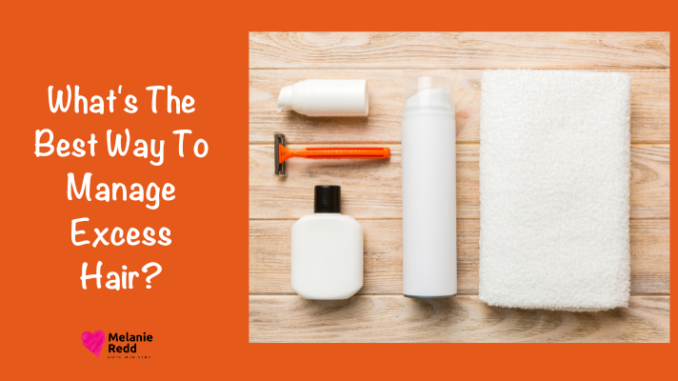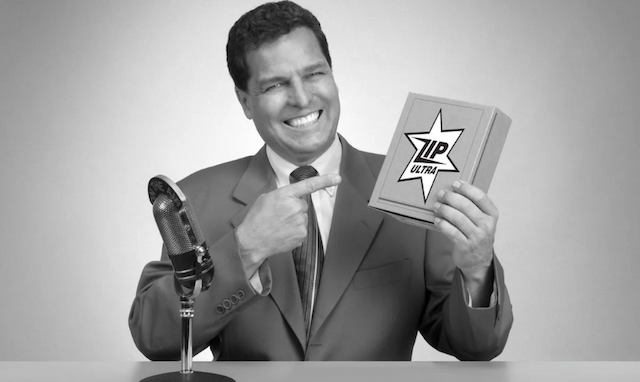What’s The Best Way To Manage Excess Hair?

What’s The Best Way To Manage Excess Hair?
There are a lot of reasons to want to get some help in managing or removing, some body hair. It might make you self-conscious.
You might want to exercise but find that body hair can make it more uncomfortable with the chafing. You might simply want to relieve the stress that comes with having to manage it all the time.
Here, we’re going to look at various ways you can manage and remove body hair.
Also, we will consider which type might be the best suited to your needs, so you don’t have to keep thinking about it.
First Way to Manage Excess Hair: The traditional choice
The most common method, and likely not the one you’re going to choose from this list, is to get out your razor and start shaving.
It is the quickest and easiest route to get rid of hair, and there are razors made that can make it a lot easier to reach every part of the body.
The big problem with shaving, however, is that your hair begins to regrow immediately after you’ve done it. What’s more, shaving can lead to the appearance of ingrown hairs which can be painful and even potentially lead to infection.
Exfoliating every day and using warm water to moisturize your skin can help you avoid ingrown hairs, as can using shaving gels. Those with sensitive skin may want to take even more steps, such as showering before they shave.
The second Way to Manage Excess Hair is plucking.
If you want to get to the root of the problem, one way to start is to pull the hair out physically from the follicle.
This does last slightly longer before your hair starts regrowing and becomes physical again. But it is a fairly slow method, and more often used to pull out single, stray hairs that are long enough to grab in the first place.
The most basic way to do this is to grab a hair with your fingernails and pull, but many of the other methods above use this basic principle as a basis.
Get the tweezers out
Tweezing is not the same as plucking, so it’s important to go over the difference.
Again, it’s mostly used for removing unwanted stray hairs, and for using it to shape certain aspects of your body hair, such as your eyebrows.
But it’s very effective and even more inexpensive since you don’t need anything more than a pair of tweezers. After that, you can expect the results to last for around three to eight weeks before the hair starts regrowing.
However, it’s not practical for all body parts. It doesn’t work as well, for instance, for leg hair. There are different kinds of tweezers to work with different kinds of hair, however.
A Fourth Way to Manage Excess Hair: Threading
What is threading?
More than straight-up removing a patch of hair, threading is also typically used to shape your eyebrows and is usually done with the help of a salon professional (but that’s not to say that there aren’t DIY threading methods you can use at home.)
It involves using a cotton or other thread that is doubled over, twisted, and then rolled over the area of the hair. The hair gets caught in the thread and tugged out as it’s rolled. It’s a quicker form of shaping hair, removing multiple at once.
However, it can be a little more on the painful side and will leave your skin a little red and irritated for a while. Therefore, it’s probably not best to do it before you’re heading for a night out.
A Fifth Way to Manage Excess Hair: Wax.
Get out the wax. The first time you get waxed can be quite a memorable experience. The feeling of having a whole patch of hair plucked out at once can be bracing, to say the very least.
You might be feeling the ache on your skin for a little while but, a lot of women are willing to go with it because it really can be very effective.
It doesn’t take very long to do, and you can either do it in your own home, or you can work with a professional who can offer a little more precision and experience.
As with tweezing and plucking, you’re pulling the hair directly out at the root, rather than just cutting it off, which means that it typically lasts a good deal longer.
A sweeter approach
Sugar waxing, or sugaring, as it is known, sounds a lot more pleasant and sweet than it is. This increasingly popular form of hair removal is much the same as regular waxing.
However, it uses a natural substance, largely comprised of sugar, as the name suggests, instead of wax, and a paper strip or cloth.
As with waxing, this strip is then pulled off after the sugar wax has time to stick. The main difference is that the wax is water soluble, thanks to being made of sugar so it’s a lot easier to wash off.
What’s more, you can make your own sugar wax at home. The only real downside is that it can sting just as much as regular waxing does.
A Seventh Way to Manage Excess Hair: Using lasers
Now, if you’re looking to get a lot more technologically advanced with it, then many would argue that there are no hair removal methods that are longer lasting and as effective as laser removal.
There are home IPL removers you can get but, for the very best options, most people tend to opt for the professional touch, like Infinity Laser Spa.
Modern laser hair removal involves using pulses of light at different wavelengths and energy outputs that vaporize the hair. When lasered, hair won’t start visibility growing back for months, if not years.
However, you do have to do it over multiple sessions to get the very best results, and there’s a little recovery time to help your skin get back to its usual appearance and feel after a session.
An Eighth Way: The Medicinal Route
There are medications you can take with the help of your doctor or dermatologic. Vaniqa skin cream is the only one that is FDA-approved and available through prescriptions, and it works by blocking the enzymes that cause cell growth in the hair follicle itself, stunting your hair’s ability to grow.
It’s typically used for unwanted facial hair, and the effects start to become visible after roughly four to eight weeks. It’s worth noting that this option doesn’t stop hair growth, it just slows it down.
However, it can make unwanted facial hair a lot easier to manage afterward, with some of the other methods mentioned above, and can be used alongside laser hair removal.
Other creams
Aside from Vaniqa, there are options known as depilatory creams, which include brands like Nair. These creams work by using a combination of chemicals that are designed to melt down hair, breaking it away from your skin cells.
These creams do use fairly strong chemicals, which may not be suited to everyone, such as those who have particularly sensitive skin, but they are safe to use when following the guidelines, even if they have a really strong chemical smell.
They’re great for working on large patches of hair, as well, and thicker, stronger hairs that other methods might not get rid of quite as easily. Just be sure to check the ingredients for anything your skin might react to before using them.
Is there are natural approach?
Aside from getting hands-on with the methods mentioned above, some people might want to look at ways they can naturally slow their hair growth, such as through their diet or with supplements. The answer is not all that clear.
Hair growth rate is influenced by a range of factors, such as levels of testosterone.
Some people will try to address high testosterone levels such as by making changes to their diet. Other try by removing refined carbs, and taking vitamin B6 supplements. But there’s no clear-cut method that’s going to work. You see a lot of natural solutions proposed, but you should always be skeptical of results until you’re able to see them.
The best method is specific to where and when
If you’re looking at one of the more physical approaches mentioned above, whether it’s shaving, plucking, waxing, sugaring, tweezing, threading, or using a laser, then you should be mindful of where on your body you’re doing it.
Waxing and lasering can work great for your body hair, but the hair on your face is admittedly a lot more sensitive.
So you may want to take a more gentle or specific approach. The thickness and coarseness of the hair might make a difference as well. Where tweezing or shaving is harder, then a stronger option like using Nair or laser hair removal might be more to your speed.
With the help of the guide above, you should have a much stronger idea of the pros and cons of various methods of hair removal, both in the short term and the long term. Take the time to do some extra research to find out which is right for you.
Were you encouraged by what you read?
Then, would you share this article with a friend, co-worker, or family member?
Or, maybe you can send it to a friend or family member?

This blog occasionally uses affiliate links and may contain affiliate links. Additionally, Melanie Redd is a participant in the Amazon Services LLC Associates Program.
This is an affiliate advertising program designed to provide a means for sites to earn advertising fees. These are earned by advertising and linking to amazon.com. Also, for more on my disclosure policy, click HERE.
© Melanie Redd and Hope Ministry, 2023. Unauthorized use and/or duplication of this material without express and written permission from this blog’s author and/or owner is strictly prohibited.

Further, excerpts and links may be used, provided that full and clear credit is given to Melanie Redd and Hope Ministry, LLC. Please give appropriate and specific directions to the original content.





